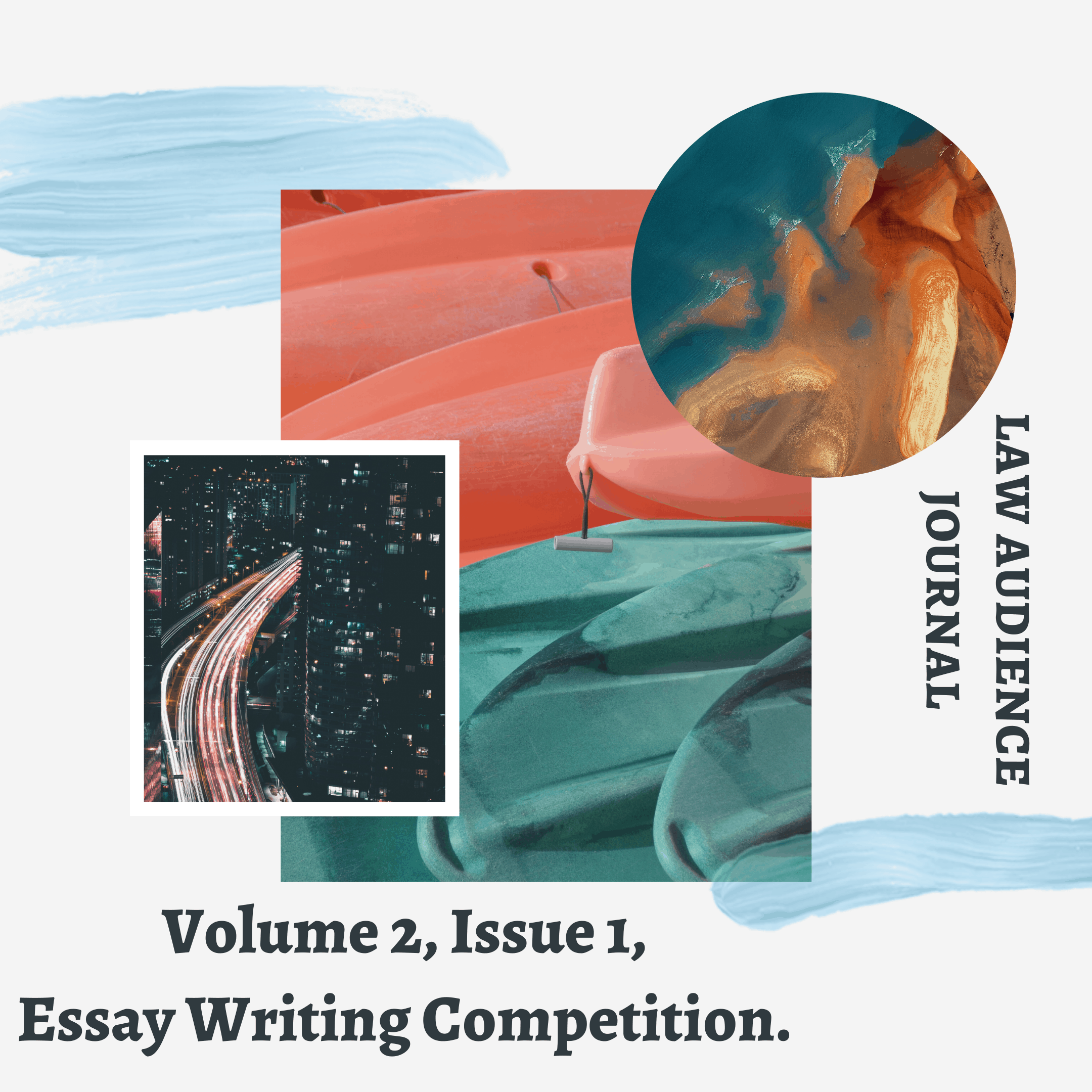Authored by: Ms. Kumari Surbhi (B.A.LL.B), Maharaja Agrasen Institute of Management Studies.
I. INTRODUCTION:
In India, Judiciary is meant to guarantee the protection of citizen’s right at every instance. Its prime objective is to ensure speedy justice to the people however; in reality, the objective seems to be a far-fetched dream owing to multiple reasons. Unfortunately, there is a delay in the delivery of justice which in true sense results in denial of the same. So, It can be outrightly said that the “Justice delayed is Justice denied”. This legal maxim means “Justice not done in time is Injustice”, meaning thereby in India, every citizen has a ‘right to redressal’ but when it is not forthcoming within a reasonable period of time, it is equivalent to no justice given at all. Cases being lingered for years are no novice. Today, it takes minimum twenty years if a case goes all the way from Sub-ordinate Court to the High Court and then finally the Supreme Court resulting in multiple generations of litigants, enormous cost, mental agony and what not. As per the NCRB report, over 10.4% of cases are pending for more than a decade. Besides this, there are numerous cases which have been reserved for the last four to five decades.
II. CASES:
For example: In L. N. Mishra Murder Case , 1975[1]; L.N. Mishra, who was the then minister of railways, under Government of India was killed in a bomb blast at a function at Samastipur Railway Station in January 1975. Besides Mishra, two persons had died and seven others were injured in the bomb blast. The case went on for around 40 years and finally, the trial court gave the judgement in November, 2014. Ranjan Dwivedi, one of the four accused was 27 years old at the time of the blast turned 66 years old at the time of judgement and one of the accused even died. The Trial Court awarded 4 years of rigorous imprisonment to Dwivedi and 10 years RI to Sudevanand and other. But remember one thing, this case has yet not disposed of, the appeal to the HC and SC is yet to go.
Just imagine if such a grievous crime against the minister (powerful) could take decades to resolve then what would have been the situation of pettier crime. This is one of the lengthiest legal battles which are symptomatic of our poor and sluggish system of judiciary. This is not the only case but there are thousands of such cases pending in all the Courts across the country where either the accused has spent more jail time than required by the law or has died awaiting the judgement to come.
In Civil Suit, the condition is that the 2nd or sometimes the 3rd generation of the family receives the final judgement. Sarcastically, we have become so habitual to this sluggish pace of judiciary, that it creates amusement in the society if any case gets disposed of timely. There is a very popular saying that “justice should not only be done, but seen to be done” meaning thereby the justice delivered should contain some value. But justice delivered after this long would be deprived of its true meaning.
For example, Nirbhaya Gangrape and murder Case, 2012[2]. Eight years have gone by since the horrific gang rape of a female physiotherapist student in the heart of national capital. The brutal crime made a global headline. It sought days of protest and force the then government to enact tougher laws. Despite all of these, the wheels of justice barely turned and after eight years, finally the Nirbhaya got justice on 20th March, 2020, when all the four rapists were hanged till death at 5.30 in the morning. But the question arises, has justice been really done? Has justice really served the purpose? After 8 years of trial, on 7th January 2020, a death warrant was issued for the Nirbhaya rapists by a Delhi Court, setting an execution date of 22 January 2020, at 7:00 A.M. but this didn’t happen. The death sentence of the convicts were junked because the petitions filed by the convicts were pending even the convict’s lawyer went on saying that the President of India has turned down the petition hurriedly , “justice hurried is justice buried”. Do you seriously think the justice is hurried? It’s been 8 years since the happening of such heinous crime and now this is India of 2020 where everything is fast and instantaneous then why not justice? Shouldn’t it be time-bound, why the victim family should have to wait for 8 years? And revisit the horror each time they visit the Court. Thousands of cases have been reported during this period.
As per the latest NCRB report, around 32,500 rape cases have been reported alone in 2017 (around 90 cases per day) and in 2019, more than 1 lakh cases were reported under the Protection of Child from Sexual Abuse. Besides this there are numerous cases which are not even reported because of the fear of social stigma and non-availability of resources, the inefficient judicial system of India is also one of the reasons. One Nirbhaya got justice but what about other Nirbhayas?
Is it any surprise that the people then celebrated the instant justice and encounter in India in Priyanka Reddy; Hyderabad Rape and Murder Case, 2019, where all the four rapists were shot dead in the police encounter? Despite the fact that the encounter of the police was questioned, whole India applauded this action of the police officer. Even the mother of Nirbhaya cheered the police officer for his act and said that today the justice has been done in true sense. The picture of celebration that emerged across the country is in itself a proof that the people are losing their faith in the judicial system and this is a dangerous trend arising which can lead the judiciary towards its end so, it a high time to revamp the judicial system and provide justice at earliest to the common people.
Supreme Court in many cases upheld that the “Right to Speedy Trial” is a fundamental right of citizens under Article 21 of the Constitution of India, but in reality, it seems like a hypothetical imagination. A/c to National Judicial Data Grid Report, there is a backlog of more than 3cr. Cases across all the Courts in India including around 8 lakh cases pending for more than a decade. Out of which 61 thousand cases are pending in the Supreme Court of India alone; over 4.3 billion cases are pending in 25 High Courts of India in which Delhi has the most number of backlog of approx. 5 lakhs cases.
There are few cases which prove that delay in justice somehow makes it ambiguous or say meaningless. For example: In ISRO Spy Case, 1994[3], the ex- ISRO scientist Nambi Narayanan along with K. Chandrashekhar and three others were arrested on the suspect of sharing confidential documents of ISRO with two Maldives ladies. The case was first investigated by the Kerala Police later handed to the CBI who proved no espionage as was alleged to have taken place in 1996. But the proceedings continued for twenty-four years and the verdict came on 14th September, 2018 an hour later after the demise of K. Chandrashekar. The false allegation ruined the whole career and reputation of Mr. Narayanan and others. In so far as Justice is concerned, can be said that justice is being done to them? No, absolutely not, I don’t think there is any importance of such justice delivered after decades.
Mumbai Serial Bomb Blast, March 1993[4], which shook up the whole nation, bombs were dropped at 13 different places in the city resulting in 257 deaths and 1,400 injured. It is said to be the largest terror attacks in the history of India. But in this case, too, ignoring the graveness of the act, Judiciary proved to be inefficient and continued its proceeding for 22 years. and one of the accused of this case named, Yacub Menon was sentenced to death in the year 2015 but still case is not disposed of. The mastermind of the blast Daud Ibrahim and Tiger Memon have not arrested yet. These are some of the lacunas of our judicial system which is urgently needed to work out.
III. CONCLUSION:
Now the question which arises here is what are the reasons behind this delay in justice and how it can be resolved? Corruption in the system, lack of quality judges, perks and salaries and vacancy on the post of judges etc. In 1950, when the Supreme Court was created, it had a total of 8 judges including 1 Chief Justice and cases were 1215 only. After a decade in 1960, the number of judges rose to 14 and cases increased to 3,247; further, in 1977, the number of judges increased to 18 and cases became 14,501; in 2009, the number of judges became 31 whereas cases increased to 77,151. From 2009, the number of judges remained the same whereas Cases went on increasing day by day.
Today, the total number of judges across India is around 23,000 out of which 5,500 posts are vacant for 130 crores population i.e., 17 judges per 10 lakh citizens at present but it was recommended by one law commission to have 50 judges per 10 lakh population.
So, there is a great need to fulfil these posts with the quality judges so as to reduce the burden of cases to some extent. Establishment of fast track courts can be another solution; this will help in clearing the cases on a priority basis.
[1] Sudevanand v State,(2012) 3 SCC 387 (India).
[2] Mukesh v State (NCT of Delhi) (2018) 8 SCC 149; Vinay Sharma and another v State (NCT of Delhi) & others (2018) 8 SCC 186 (India).
[3] S. Nambi Narayanan v Siby Mathews & Others Etc.,(2018).
[4] Yakub Abdul Razak Memon v State of Maharashtra and ors. (2015) SCC 135.


